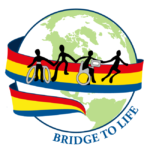This presentation builds on The Cortical Visual (CVI) Impairment: An Approach to Assessment and Intervention– a functional vision assessment that investigates and determines the extent to which a child’s CVI affects their functional vision (Roman Lantzy, 2007). We plan to share an easy-to-use, clinical framework aimed at helping guide family members, teachers and clinicians to support children who have cortical visual impairment (CVI) and complex communication needs (CCN). The Vision, Language, Learning And Communication (VLLC) Framework is based on how a child scores on The CVI Range and focuses on setting and meeting goals that acknowledge the dynamic nature and key relationships among vision, language, learning, mobility and communication skills. This presentation will introduce the VLLC Framework and encourage discussion regarding its usability.
Children with CVI and CCN face challenges seeing, learning and using language, as well as communicating, participating and exploring. Research clearly shows that early and appropriately targeted interventions make a significant difference. Thus, it is essential, isn’t it, to provide these children with thousands of the right kinds of opportunities to engage actively in seeing, learning, exploring and developing critical language and communication skills across environments.
The VLLC Framework takes a systems approach to disability (Paul & Norbury, 2012; Thistle & Wilkinson, 2013), going beyond the individual to highlight the need for adaptations within the environment and specifically addresses the inclusion of tools that can support and maximize a child’s ability to function. The framework seeks to tear down professional silos, stressing the key roles of communication partners across activities and environments.


